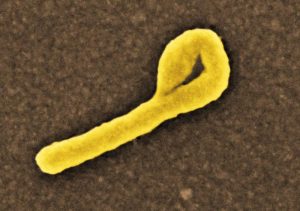By NewsDesk @bactiman63
The Uganda Ministry of Health and the World Health Organization (WHO) report it has been 37 days since the last confirmed Ebola Virus Disease (EVD) case as of January 3, 2023.

On 20th September 2022, the Ministry of Health declared an outbreak of Sudan Ebola Virus (SVD) after a case managed at Mubende Regional Referral Hospital (MRRH) in Mubende district was confirmed through testing at the Uganda Virus Research Institute (UVRI).
To date, 142 confirmed EVD cases, including 55 deaths have been reported (39% CFR).
For an outbreak to be declared over, no confirmed or probable EVD cases are detected for a period of 42 days (i.e. twice the maximum incubation period for Ebola infections) since the last potential
exposure to the last case occurred.
After the 42-day period has elapsed and the outbreak has been declared over, a combination of
active and passive surveillance should be maintained for at least 6 months due to the risk of re-emergence of EVD through a reintroduction event or a new emergence, and the possibility of a missed transmission chain.
Sudan virus disease is a severe, often fatal illness affecting humans. Sudan virus was first reported in southern Sudan in June 1976, since then the virus has emerged periodically and up to now, seven outbreaks caused by SUDV have been reported, four in Uganda and three in Sudan. The estimated case fatality ratios of SVD have varied from 41% to 100% in past outbreaks.
- Leptospirosis in Puerto Rico: More than 700 total cases since Hurricane Fiona
- Rabies in Mexico: Human cases reported in Oaxaca and Nayarit
- CDC warns of Salmonella infections linked to raw alfalfa sprouts
- Vietnam: Phú Thọ man dies from rabies months after dog bite
- Malaysia advises public how to avoid Naegleria fowleri after South Korea reports 1st case
- Nebraska reports Salmonella outbreak, Linked to alfalfa sprouts
- South Africa reports 13th confirmed human rabies case of 2022
- Plague deaths reported in Ambohidratrimo district: Madagascar media

